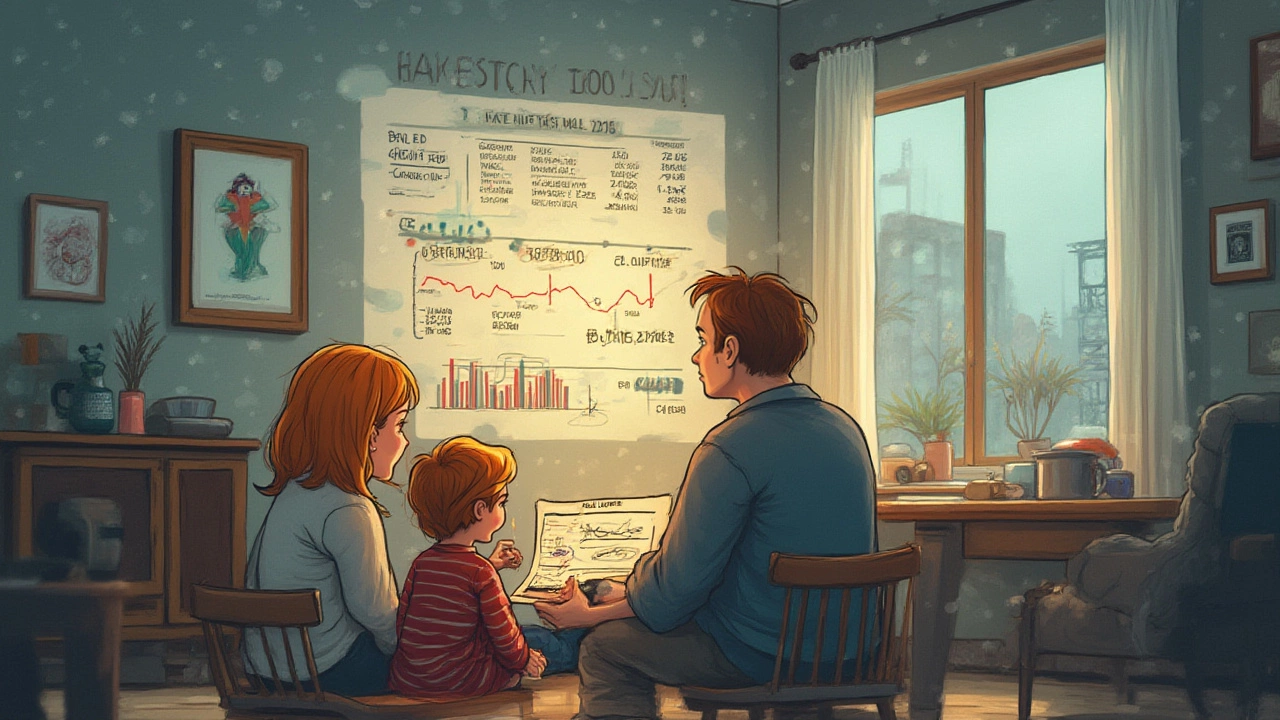
The US spends more money on healthcare than any other country, yet still fills emergency rooms with people worrying not just about their pain, but about how to pay for it. People who haven't even left the hospital already have bills piling up on their phones. How is it even possible for a country with some of the world's best doctors and hospitals to have families choose between groceries and life-saving treatment? Spoiler: It’s not because Americans use more healthcare than others, or because everything here is just fancier. The sticker shock comes from somewhere else, and yes, it can hit anyone.
Where Does the Money Go? Breaking Down US Healthcare Spending
The number gets tossed around so much it almost feels normal: America spent about $4.5 trillion on healthcare in 2022. That's more than the yearly GDP of entire countries. But what’s hiding inside that mountain of cash?
For starters, prices run wild here. An MRI scan that might cost $300 in Australia could send you a bill for $2,800 in the US. “Facility fees,” “administrative charges,” and a whole list of weird itemized costs line the bills. Prescription drugs cost up to 2-3 times more than comparable countries. Even a simple blood test, which might cost $50 or less in France or Japan, could hit $500 here.
A lot of this comes from how providers set prices. In the US, hospitals, clinics, and private practices each negotiate rates with hundreds of insurance companies. There's no standard menu, so prices vary wildly, even within the same city. A hospital in Houston famously charged a teacher $108,951 for snakebite antivenom, while a simple urine test hit $17,000 for an out-of-network patient elsewhere.
Where does money go? Let’s break it down in a handy table:
| Healthcare Spending Area | Percentage of Total |
|---|---|
| Hospitals | 31% |
| Physician & Clinical Services | 20% |
| Prescription Drugs | 9% |
| Nursing Care/Long-Term Support | 5% |
| Administrative Costs | 8-15% |
| Other (labs, home care, etc) | Rest |
One number jumps out: administrative costs. It’s been pegged at 8-15% of every dollar, about twice what gets spent in places like Canada or the UK. Why so much? Mostly because of the endless paperwork, billing departments chasing insurance approvals, coding rules, and complicated networks.
The Insurance Maze: Why Your Coverage Doesn’t Guarantee Lower Bills
If you think insurance is the magic wand that solves this, think again. In the US, health insurance is tied to jobs for the majority of people under 65. Lose your job, and you risk losing your insurance—at the exact moment you might need it most. Even when insured, you face premiums (those are the monthly fees, whether you get sick or not), deductibles (how much you pay before insurance kicks in), and co-pays (your share every time).
What a lot of Americans don’t realize: having health insurance doesn’t mean you never see a big bill. Last year, nearly 40% of insured adults said they skipped or delayed care because of the cost, according to a survey from the Kaiser Family Foundation. Half of all US adults have trouble paying medical bills—even with insurance. It’s like buying an umbrella that only works during light showers, but leaves you soaked during a storm.
Insurance companies themselves face a world of paperwork and negotiation. Every test or treatment may require prior approval, endless forms, and sometimes entire teams just to appeal denials. There are thousands of insurance plans, each with slightly different rules. When a hospital has to figure out what’s covered, it’s not surprising they need an army of billers and coders. Someone pays for all those salaries and computer systems, and that someone is the patient—directly or as a cost passed on in premiums.
Ever wonder why premiums keep climbing? Every year, insurers raise rates to cover higher healthcare costs, including administrative overhead. The average family premium topped $24,000 in 2024, according to the latest MarketWatch numbers, with workers themselves on the hook for about $7,000 of that. For many, that’s a huge bite out of disposable income—right up there with rent or mortgage.
And what about "in-network" and "out-of-network" providers? Visit the wrong clinic, or have an out-of-network anesthesiologist sneak into your routine surgery, and suddenly that insurance you pay dearly for might cover almost nothing. Surprise medical bills are all too real.

The Price No One Sees: Administrative Bloat and Middlemen
British hospitals run with about a third of the administrative workers per bed compared to American hospitals. Why? In single-payer systems, billing is straightforward: a national system, one set of rules, one payer. In the US, every claim can spark an investigation. Did the doctor treat you for the right “code?” Did the insurance company get prior authorization? Was everything filed correctly?
This means armies of workers hired just to sort bills, submit claims, audit each other’s paperwork, and argue over reimbursement. In 2023, Harvard researchers estimated the US spent about $1,600 per person per year on administrative overhead—about four times what the Netherlands or France spend. Want to know why your doctor seems harried? She might spend hours each day fighting insurance companies to get your treatments approved.
To make it more complicated, the medical supply chain is packed with middlemen—companies that sit between drug manufacturers and patients, adding their own markups. Pharmacy benefit managers (PBMs, as they're called) negotiate drug prices… and sometimes just raise them higher. That’s why insulin or an EpiPen can cost hundreds, even when their main ingredients cost just a few bucks to manufacture.
Doctors don’t love this setup. Patients definitely don’t. But each new regulation seems to bring more forms, not less. Even with the growth of electronic medical records, paperwork hasn’t gone away—it’s just moved from paper folders to digital headaches.
What Can Be Done—and How Individuals Can Protect Themselves
You can’t fix the US healthcare system overnight, but there are ways to be less blindsided by bills, and a few hopeful signals worth noticing. First, always ask for an itemized bill after a hospital visit. You’d be surprised how often it contains charges for things you never received. Contest them right away, and you could save money.
Shop ahead (yes, like you would for plane tickets). Thanks to new “price transparency” laws, many hospitals must list costs online, even if it’s buried somewhere. Use sites like Fair Health Consumer or Healthcare Bluebook to get an estimate before elective surgeries or tests. Some independent labs or surgery centers offer "cash rates" far lower than what’s billed through insurance—ask about these, even if you’re insured.
If you have a planned procedure, check which providers (especially radiologists and anesthesiologists) are in-network. Hospitals often use contractors who don’t accept your insurance, setting you up for a surprise. If you’re billed out-of-network, appeal it! Laws are slowly changing to give patients more rights in these situations.
Consider a health savings account (HSA) if you qualify. It lets you put away pre-tax dollars for medical expenses, softening the sting when bills hit. If a bill is unaffordable, ask the provider for a payment plan, or apply for hospital charity care programs. You don’t have to accept the sticker price at face value.
Maybe the brightest glimmer: in recent years, more people and lawmakers are demanding a reset. States like Maryland are experimenting with all-payer rate systems, setting standard charges for all buyers. More aggressive prescription drug price negotiations have started at the federal level. These won’t fix things overnight, but they do show change isn’t impossible.
If you’re reading this after a jaw-dropping bill, don't let embarrassment keep you silent. Talk to the billing department, compare charges, and ask for help. You're not alone—and sometimes, persistence works better than any fancy insurance.
The US healthcare system is wild, complicated, and yes, expensive for reasons most people have never heard about. But more information means a little more power in your corner, until the system itself gets the overhaul it needs.